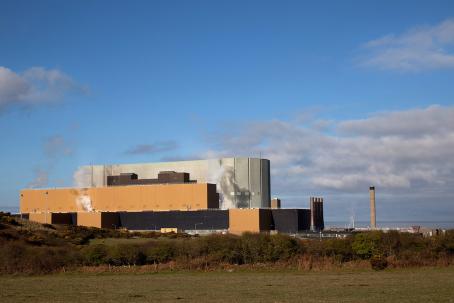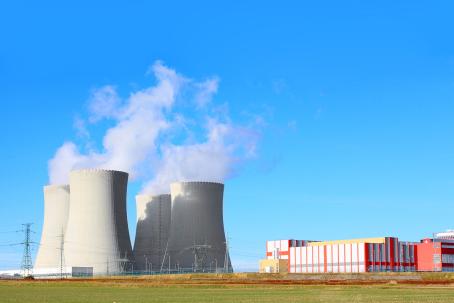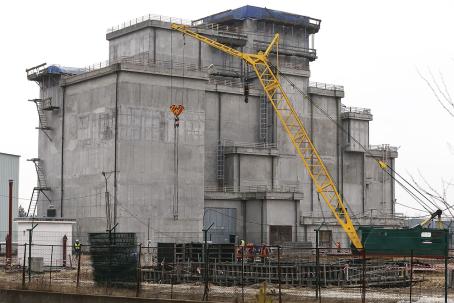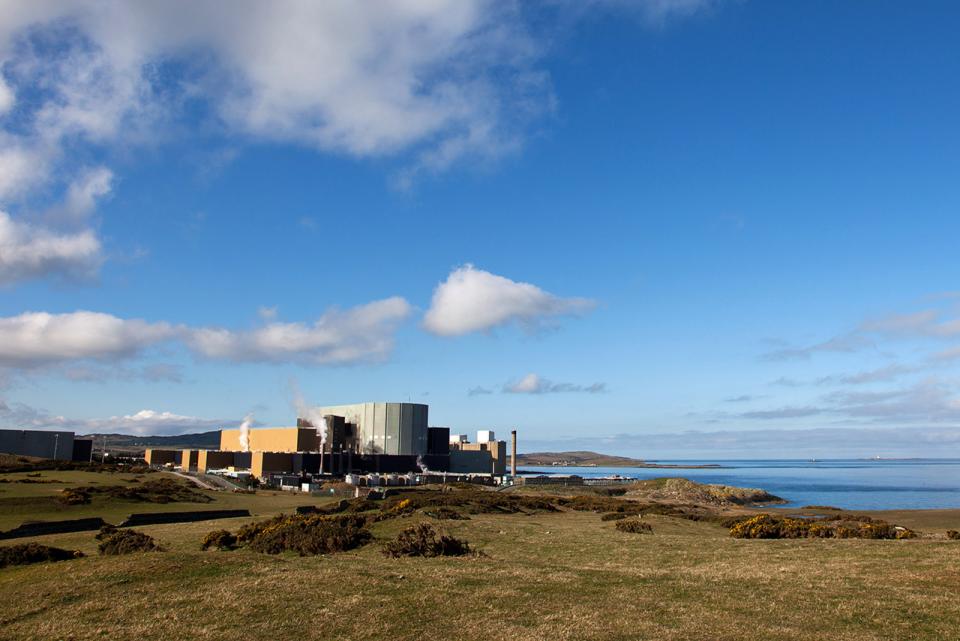
Interim Storage
4 min read
The Wylfa nuclear power plant in Great Britain, with Magnox reactors, is one of the first power plants that employed the dry storage of spent fuel.
After the fuel is removed from a reactor, it is radioactive and generates heat. It must be permanently cooled so that it does not melt. That is why the spent fuel is stored in water pools near the reactor. Water assures both cooling and also provides protection against the ionizing radiation. After three or four years, the fuel bundle radioactivity, as well as the generated heat, is reduced by one-half. Now, the fuel can be transported to another interim storage where it can stay for decades. The majority of these interim storage sites are located within the nuclear power plant facility. The advantage of having interim storage is the gradual accumulation of the spent fuel. It can then be transported for reprocessing or for deposit in the final repository. This is simpler, cheaper, and also safer.
Video: Storage of spent fuel in wet interim storage pools.
Wet Interim Storage
For the first few years after it is removed from a reactor, the fuel is stored in large water pools. Usually, the fuel bundles are transported there directly from the reactor vessel by a crane. The advantage of such storage is an easy visual inspection, as well as continuous cooling by circulating water that also provides, if sufficiently deep, radiation shielding. The disadvantage is the necessary ongoing water circulation and water treatment, i.e., higher operating costs than dry storage. The majority of wet interim storage locations are located directly near the reactor. However, there are also independent wet interim storage places used to store spent fuel from several blocks or several power plants.
Dry Interim Storage
Building used for fuel preparation for its interim storage ISF-2 that allows dry flask storage of about 21,000 fuel assemblies from the Chernobyl power plant, for the next 100 years.
Dry interim storage is less costly and easier to maintain than wet storage. Cooling of the spent fuel is provided by the natural circulation of the ambient air or by forced circulation of inert gas. In some storage facilities, the fuel is placed into module boxes cooled by inert gas that are stored in special concrete cellars (this setup is used in, e.g., Fort Saint Vrain in the USA or Wylfa in Great Britain). In others, the fuel is stored in steel baskets placed in concrete air-cooled vessels (e.g., Oconee in the USA, Gentilly in Canada). Spent fuel is also very frequently stored in special storage flasks that are also used for fuel transportation. The structure of these flasks provides shielding from most of the harmful radiation and facilitates heat removal from the fuel to the flask surface. These flasks are placed in a light interim storage building (e.g., Ahaus in Germany or the Dukovany and Temelín nuclear power plants in the Czech Republic), or in an open space (e.g., Surry in the USA).
In the Wylfa power plant, there are two types of dry interim storage: short-term — cooled by CO₂; and long-term storage — cooled by air.
There are independent wet storage facilities in Sweden (the central storage CLAB), France (the reprocessing facility in La Hague) and Great Britain (the reprocessing facility at Sellafield).








